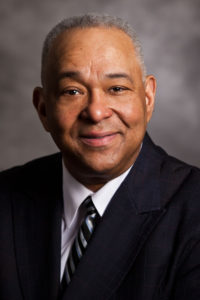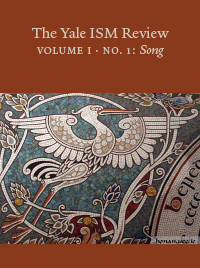James Abbington
Several years ago I was privileged to speak at length with William L. Dawson (now deceased), the world-renowned African American composer and arranger of Negro spirituals and former director of the celebrated Tuskegee Institute Choir. He asked me to define a “spiritual.” Completely intimidated, I attempted to put a few feeble words together as if I were composing an entry for the New Grove Dictionary of Music and Musicians, to which he responded, “That’s too many words that aren’t saying anything!” He finally answered, “The spiritual is simply a sacred folk song created by the people.”
The answer was simple but not simplistic. After hearing Mr. Dawson’s definition, I began to reflect on all the sacred folk songs to which I had been exposed in the African American tradition. How were these songs produced? What characteristics did they have in common? I observed that they were created by an individual or individuals of a particular group and adopted by that group for singing that both reflects and communicates the system that produced them. They faithfully convey popular sentiments and beliefs. They express deep emotions. They reflect religious or secular experiences or attitudes. But, most importantly, they were created by the people — the folks — not by skilled composers and trained musicians.
In Deep River and The Negro Spiritual Speaks of Life and Death, Howard Thurman observed that within the Negro spiritual “is the secret of [the enslaved’s] ascendency over circumstances and the basis of their assurance concerning life and death.”[1] In Folk Songs of the American Negro, John W. Work III asserts that African American songs are “full of Scripture, quoted and implied,” because for centuries — if reading was permitted at all — the Bible was usually the only book the enslaved were allowed to “study.”[2]
Wendell P. Whalum affirmed that “The serious sacred music of the oral tradition is primarily individual-to-group music. It begins with the individual but is made into final composition, finished and polished by the group…. An individual contributed a musical ‘thought,’ and the group worked it over and over, reshaping phrases, adding and subtracting notes, filling in melodic gaps, adjusting harmony and rhythm. Many spirituals died when they failed to do what the group intended them to do.”[3] I recall on many occasions hearing Dr. Whalum say that “spirituals can be learned in two minutes or less if it’s a real spiritual.” Whalum’s statement is best illustrated in his arrangements entitled “Three Congregational Folk Spirituals”: “Leaning On The Lord,” “Four and Twenty Elders,” and “Fare Ye Well.”
Zora Neale Hurston provides support for Whalum’s claim in her classic The Sanctified Church as she differentiates and distinguishes between what she refers to as “neo-spirituals” (concert or arranged spirituals) and the “genuine spiritual” (or folk spiritual).
To begin with, Negro spirituals are not solo or quartette [sic] material. The jagged harmony is what makes it, and it ceases to be what it was when this is absent. Neither can any group be trained to produce it. Its truth dies under training like flowers under hot water. The harmony of the true spiritual is not regular. The dissonances are important and not to be ironed out by the trained musician. The various parts break in at any old time. Falsetto often takes the place of regular voices for short periods. Keys change. Moreover, each singing of the piece is a new creation. The congregation is bound by no rules. No two time singing is alike, so that we must consider the rendition of a song not a final thing, but a mood. It won’t be the same thing next Sunday.
Negro song to be heard truly must be sung by a group, and a group bent on expression of feelings and not on sound effects….The real Negro singer cares nothing about pitch. The first note just bursts out and the rest of the church join in — fired by the same inner urge. Every man trying to express himself through song. Every man for himself. Hence the harmony and disharmony, the shifting of keys and broken time that make up the spiritual.[4]
In his collection Spirits that Dwell in Deep Woods: Prayer and Praise Songs of the Black Religious Experience, Wyatt Tee Walker introduces twenty-four songs that he identifies as “spin-offs of the early hymn-book era in Black religious life (c. 1885–1925).” He contends that “Like the spirituals, in this respect, these have no identifiable authors. The body of this music expresses in individual form the collective consciousness of the community in matters of religious belief. There is in this music the flavor of both spiritual and Black Meter Music without any real loss of its own identity.”[5] Some of the most familiar songs in this collection that continue to be sung in many Black churches today include “Glory, Glory! Hallelujah!,” “Jesus is a Rock in a Weary Land,” “Jesus on the Main Line,” “Something on the Inside Working on the Outside,” and “You Can’t Make Me Doubt Him.”
In a 1981 lecture at the Hampton University Ministers’ and Musicians’ Conference, Dr. Whalum strongly advocated bringing the folk spiritual back into our worship services as congregational music. He maintained that spirituals could be used not only in prayer meetings and mid-week services but also as functional music for the Christian Year. He affirmed “When Blacks sing spirituals, they are singing them from their roots. They are singing them from an inner feeling, a kind of outward manifestation of an inner-living essence, feeling something very deeply. Blacks have not, as a rule…been afraid to enjoy their music. They have not been afraid to let it relate to something in their own lives and to recognize it as a good remedy for something in someone else’s life.”[6]
In many instances, sacred folk songs have been dismissed or overlooked because they were not seen as “serious” or “art music” and therefore were thought to have no place in divine worship. It has often been assumed that there could be little or no biblical foundation or theological grounding in these “simple little songs.” I strongly argue to the contrary. These sacred folk songs are biblically based, theologically astute, culturally relevant, accessible, and provide a tremendous liturgical vehicle for full, conscious, and active participation in worship. They are functional music and can provide musical support and enrichment for various portions of worship such as introits, prayer responses, scripture reading, healing and anointing services, meditation, baptism, Eucharist, reflection, fellowship, and all types of service or ritual music for the Christian year.
Sacred folk songs are created by anonymous individuals or groups of individuals. They lack the musical sophistication of notated music. This does not mean, however, that they are not intelligently conceived. Fortunately, today there are more and more resources that have notated these gems and have been sensitive to the idiomatic characteristics and performance practice of the people producing them. John Blacking once wrote, “In societies where music is not written down, informed and accurate listening is as important and as much a measure of musical ability as is performance, because it is the only means of ensuring continuity of the music tradition. Music is a product of the behavior of human groups, whether formal or informal: it is humanly organized sound.” [7]
Sacred folk songs of various traditions not only enhance the full, conscious, and active participation of the congregation, they also broaden our understanding of all of God’s people and their contexts. Through these songs, “a call to worship can to be sounded, praise can be declared, faith can be confessed, a text from the Bible can be heralded, faith can be confessed, repentance can be invited, a prayer can be offered, and sacrifice can be encouraged.[8] They should be sung with intensity of conviction that can move the souls of people who feel jaded, empty, and defeated by the deadening oppressions and confusions of life. Sing until the power of the Lord comes down!
 James Abbington is associate professor of church music and worship at Candler School of Theology at Emory University. He has been Executive Editor of the African American Church Music Series published by GIA Publications in Chicago for over fifteen years and has published several books, recordings, worship resources and collections for organ and congregational song. His most recent publications are Readings in African American Church Music and Worship, Volume 2, and Singing Our Savior’s Story: A Congregational Song Supplement for the Christian Year (Hymn Texts since 1990).
James Abbington is associate professor of church music and worship at Candler School of Theology at Emory University. He has been Executive Editor of the African American Church Music Series published by GIA Publications in Chicago for over fifteen years and has published several books, recordings, worship resources and collections for organ and congregational song. His most recent publications are Readings in African American Church Music and Worship, Volume 2, and Singing Our Savior’s Story: A Congregational Song Supplement for the Christian Year (Hymn Texts since 1990).
The resources below are strongly recommended for anyone who wishes to explore further the folks’ sacred song in African American spirituals.
-
- Spirits That Dwell in Deep Woods: Prayer and Praise Hymns in the Black Religious Experience by Wyatt Tee Walker, edited by James Abbington (GIA Publications)
- African American Heritage Hymnal (GIA Publications)
- Total Praise Hymnal: Songs and Other Worship Resources for Every Generation (GIA Publications)
- Religious Folk-Songs of the Negro, edited by R. Nathaniel Dett (available through Hampton University Bookstore, Hampton, VA)
- American Negro Song: 230 Folks Songs and Spirituals, Religious and Secular, edited by John W. Work III (Dover Books on Music)
- Spirituals Triumphant: Old and New, edited by Edward Boatner and Willa A. Townsend (available through the Sunday School Publishing Board of the National Baptist Convention, USA, Inc., Nashville, TN)
- Songs of Zion (Nashville: United Methodist Publishing House and Abingdon Press)
- Slave Songs of the United States: The Classic 1867 Anthology, compiled and edited by William Francis Allen, Charles Pickard Ware, and Lucy McKim Garrison (Pelican Publishing Company)
- The Books of American Negro Spirituals by James Weldon and J. Rosamond Johnson (Da Capo Press)
FOOTNOTES
[1] Howard Thurman, “The Negro Spiritual Speaks of Life and Death,” in Deep River and The Negro Spiritual Speaks of Life and Death (Richmond, ID: Friends United Press, 1975), 38.
[2] John W. Work III, Folk Songs of the American Negro (New York: Greenwood Press, 1969), 37.
[3] Wendell P. Whalum, “Black Hymnody,” in Readings in African American Church Music and Worship, vol. 1. Edited and compiled by James Abbington. (Chicago: GIA Publications, 2001), 168.
[4] Zora Neale Hurston, The Sanctified Church (Berkeley, CA: Turtle Island Press, 1981), 79–81.
[5] James Abbington, Let the Church Sing On! Reflections on Black Sacred Music (Chicago: GIA Publications, 2009), 35–36.
[6] James Abbington, Let Mt. Zion Rejoice! Music in the African American Church (Valley Forge, PA: Judson Press, 2001), 123.
[7] John Blacking, How Musical is Man? (Seattle: University of Washington Press, 1973), 10.
[8] C. Welton Gaddy, The Gift of Worship (Nashville: Broadman, 1992), 155.
____
This article is licensed under a Creative Commons Attribution 4.0 License.
Recommended Citation: Abbington, James (2014) “Sacred Folk Song,” The Yale ISM Review: Vol. 1: No. 1, Article 7.
